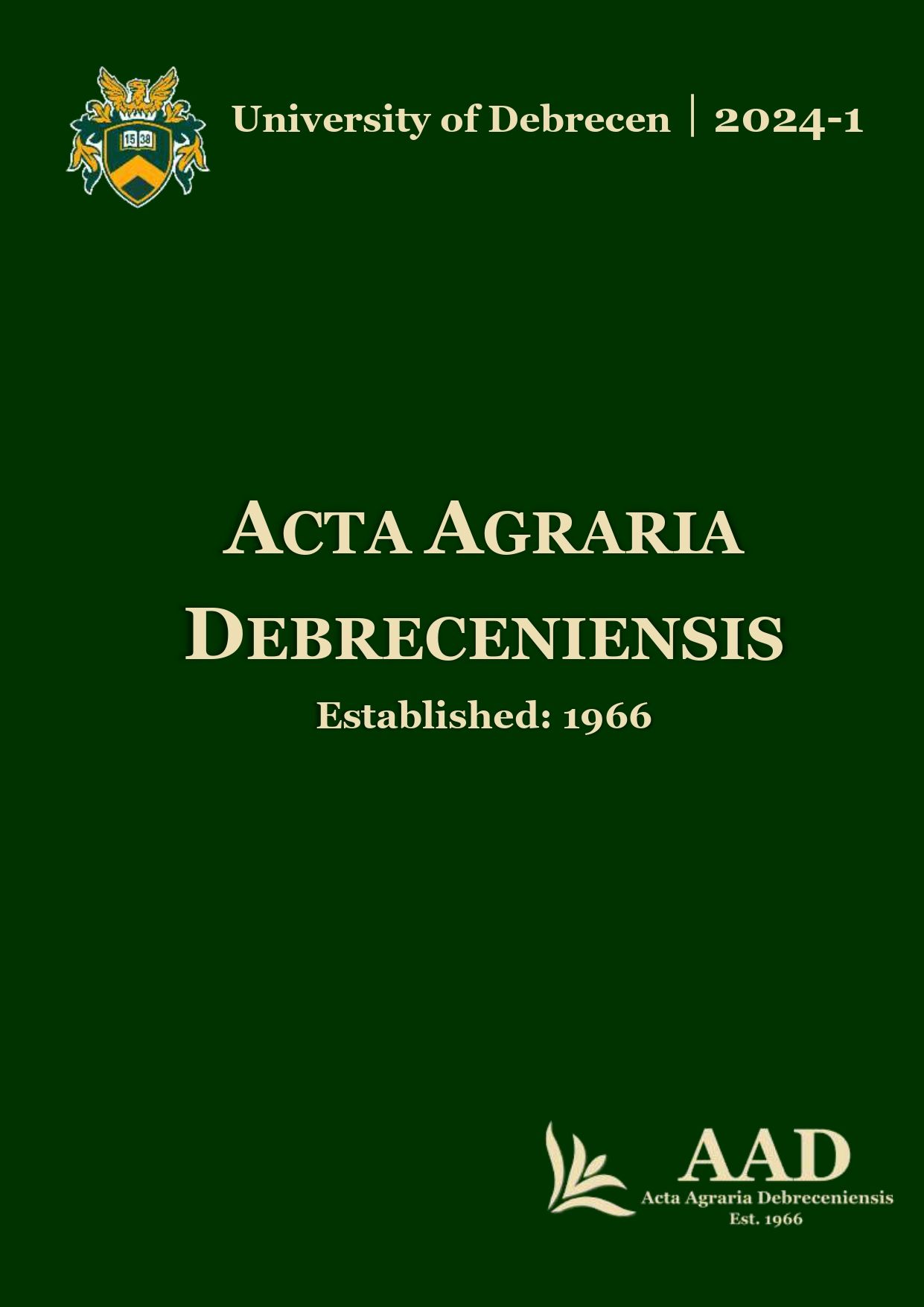Simplified volume equations for grey poplar (Populus × canescens Smith.) standing trees
Authors
View
Keywords
License
Copyright (c) 2024 by the Author(s)

This work is licensed under a Creative Commons Attribution 4.0 International License.
How To Cite
Accepted 2024-04-23
Published 2024-06-03
Abstract
Grey poplar (Populus× canescens Smith.) is a natural hybrid of white poplar (Populus alba L.) and Eurasian aspen (Populus tremula L.). It can be found throughout Europe, where both parents are present. The above mentioned species of poplars (under the term of ‘domestic poplars’) cover approximately 5% of the forests of Hungary. Of these species, grey poplar holds significance in forestry, and its role in afforestation shows a growing tendency. For this reason, improving the growing technology of grey poplar is a timely topic. In this paper we introduce algorithms which help estimate grey poplar tree volumes without having to use volume tables. Based on the performed evaluations, both equations can be used for single tree volume estimation with an error of less than 5%.
References
- Assmann, E. (1970): The Principles of Forest Yield Study. Studies in the Organic Production, Structure, Increment and Yield of Forest Stands. Pergamon. Elsevier, Amsterdam, The Netherlands. pp. 506.
- Blanco, R.; Blanco, JA. (2021): Empowering Forest Owners with Simple Volume Equations for Poplar Plantations in the Orbigo River Basin (NW Spain). Forests, 12, 124. https://doi.org/10.3390/f12020124
- Csapody, I.; Csapody V.; Rott F. (1966): Erdei fák és cserjék. Országos Erdészeti Főigazgatóság: Budapest, Hungary, pp. 266–277. (in Hungarian)
- Keserű, Zs.; Rédei, K. (2012): Homoki Leuce-nyárak termesztési technológiai modelljei. Erdészettudományi Közlemények, 2(1): pp. 61–71. (in Hungarian).
- Király, L. (1985): Erdőrendezéstan I. kézirat. –Erdészeti és Faipari Egyetem Erdőmérnöki Kar, Sopron, p. 146. (in Hungarian)
- Komán, Sz.; Németh, R.; Báder, M. (2023): An overview of the current situation of European poplar cultures with a main focus on Hungary. Appl. Sci. Volume 13, p.12922 https://doi.org/10.3390/app132312922.
- NLC (2022): Magyarország erdeinek összefoglaló adatai 2021. Nemzeti Földügyi Központ (National Land Centre), Erdészeti Főosztály. Budapest. pp.2. https://nfk.gov.hu/Magyarorszag_erdeivel_kapcsolatos_adatok_news_513 (in Hungarian) Visited: 12.02.2024.
- Rédei, K. (2000): Early performance of promising white poplar (Populus alba L.) clones in sandy ridges between the rivers Danube and Tisza in Hungary. Forestry, Vol. 73, No. 4: 407–413. https://doi.org/10.1093/forestry/73.4.407
- Rédei, K.; Keserű, Zs. (2012): Target Diameter Models for Leuce Poplar Stands Growing on Sandy Soils. Acta Silv. Lign. Hung., Vol. 8. pp. 165–170. https://doi.org/10.37045/aslh-2012-0002
- Rédei, K.; Keserű, Zs. (2022): Az ültetvényes fatermesztés technológiai sajátosságai. In: Bartha, Dénes; Csóka, György; Mátyás, Csaba (szerk.): Az erdészeti tudományok története Magyarországon. Sopron, Magyarország. Soproni Egyetemi Kiadó. pp. 197–199. (in Hungarian)
- Sopp, L.; Kolozs, L. (2013): Fatömegszámítási táblázatok, 4th ed.; National Food Chain Safety Office, State Forest Service: Budapest, Hungary, pp. 280. (in Hungarian)
- Tóth, B. (1978): Termesztési technológiák. In: Tóth, B.; Márkus, L.; Kiss, R.; Szepesi, L.; Papp L.; Szabó, K.; Csontos Gy. (szerk.): A nyárak és a füzek termesztése. Mezőgazdasági Kiadó. Budapest. pp. 374. (in Hungarian)
- Veperdi, G. (2011): Erdőbecslésten. Oktatási Segédanyag. Soproni Egyetem.pp. 115.
- West, P.W. (2009): Tree and Forest Measurement. 2nd Edition. Springer-Verlag Berlin, Heidelberg Germany. pp. 191.

 https://doi.org/10.34101/actaagrar/1/13858
https://doi.org/10.34101/actaagrar/1/13858